United Nations Transitional Authority in Cambodia
The United Nations Transitional Authority in Cambodia (UNTAC)[3] was a United Nations peacekeeping operation in Cambodia in 1992–93 formed following the 1991 Paris Peace Accords. It was also the first occasion on which the UN had taken over the administration of an independent state, organised and run an election (as opposed to monitoring or supervising), had its own radio station and jail, and been responsible for promoting and safeguarding human rights at the national level.
Cambodia | |||||||||||||
|---|---|---|---|---|---|---|---|---|---|---|---|---|---|
| 1992–1993 | |||||||||||||
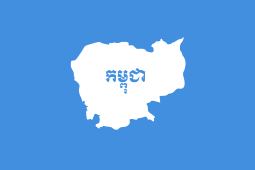 Flag
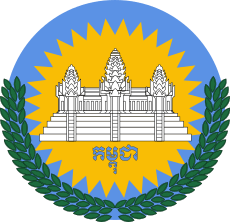 Coat of arms
| |||||||||||||
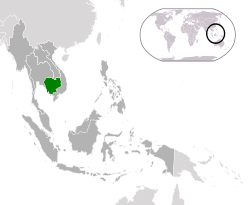 Location of Cambodia in Southeast Asia. | |||||||||||||
| Status | United Nations protectorate | ||||||||||||
| Capital | Phnom Penh | ||||||||||||
| Common languages | Khmer | ||||||||||||
| Special Representative of the Secretary-General | |||||||||||||
• 1992-1993 | Yasushi Akashi | ||||||||||||
| History | |||||||||||||
• Paris Peace Accords | 23 October 1991 | ||||||||||||
| 28 February 1992 | |||||||||||||
| 23 May 1993 | |||||||||||||
| 24 September 1993 | |||||||||||||
| Area | |||||||||||||
| 181,035 km2 (69,898 sq mi) | |||||||||||||
| Currency | Cambodian riel | ||||||||||||
| Calling code | 855 | ||||||||||||
| |||||||||||||
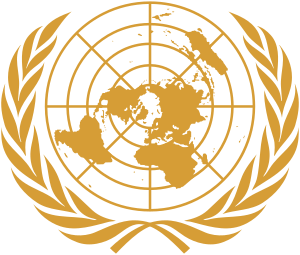 | |
| Abbreviation | UNTAC |
|---|---|
| Formation | 28 February 1992[1] |
| Type | Monitoring, peacekeeping |
| Legal status | Ended September 1993[2] |
Parent organization | United Nations Security Council |
| Website | UNTAC Website |
Part of a series on the |
|---|
| History of Cambodia |
| Early history |
| Post-Angkor Period |
| Colonial period |
|
| Contemporary era |
| Timeline |
|
|
History
UNTAC was established in February 1992 under United Nations Security Council Resolution 745 in agreement with the State of Cambodia, the de facto government of the country at that time, to implement the Paris Peace Accords of October 1991.[1] UNTAC was the product of intense diplomatic activity over many years.
Headed by Chief of Mission Yasushi Akashi (Japan), Force Commander Lieutenant-General John Sanderson (Australia), and Police Commissioner Brigadier-General Klaas Roos (Netherlands), UNTAC involved approximately 15,900 military, 3,400 civilian police, 2,000 civilians and 450 UN Volunteers, as well as locally recruited staff and interpreters. During the electoral period, more than 50,000 Cambodians served as electoral staff and some 900 international polling station officers were seconded from Governments. The whole operation cost over $1.6 billion (equivalent to $2.5 billion in 2017),[4] mostly in salaries for expatriates. The 46 participating countries providing military observers, police, or troops were:


.svg.png)


.svg.png)
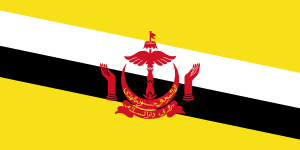


.svg.png)














.svg.png)




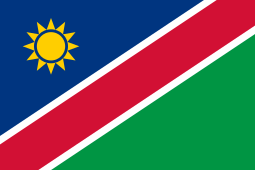


















Goals
UNTAC's aim was to restore peace and civil government in a country ruined by decades of civil war and Cold War machinations, to hold free and fair elections leading to a new constitution and to "kick-start" the rehabilitation of the country. It was to exercise 'supervision' or 'supervision or control' over all aspects of government, including foreign affairs, national defence, finance, public security and information, and to supervise, monitor and verify the withdrawal and non-return of foreign military forces; to canton, disarm and demobilise Cambodia's fighting factions, confiscate caches of weapons and military supplies, promote and protect human rights, oversee military security and maintain law and order, repatriate and resettle refugees and displaced persons, assist in mine clearance and the establishment of training programmes in mine clearance and mine awareness, rehabilitate essential infrastructure and assist in economic reconstruction and development.
Another important goal was the trial of senior Khmer Rouge leaders. The process that was initiated during the UNTAC led on 4 October 2004, to the ratification of an agreement with the United Nations by the Cambodian National Assembly on the establishment of a tribunal to try senior leaders responsible for the atrocities committed by the Khmer Rouge. Donor countries pledged the $43 million international share of the three-year tribunal budget, while the Cambodian government's share of the budget was $13.3 million. The first trials of senior Khmer Rouge leaders took place only in 2007, when many of them were already dead or in ill-health.[7]
Disarmament
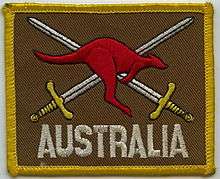
Despite UNTAC's boasting of its effectiveness and being feted by the international community as a success, UNTAC failed to disarm the Khmer Rouge, while effectively disarming the SOC's local militias.[8] This bias allowed the Khmer Rouge to make territorial gains and gave rise to political violence.[9] The State of Cambodia's military leaders were furious, claiming that UNTAC was extremely exacting with the disarmament of the CPAF, but too lenient and ineffective when it came to disarm the Khmer Rouge.[10]
1993 elections
Over 4 million Cambodians (about 90% of eligible voters) participated in the May 1993 elections, although the Khmer Rouge or Party of Democratic Kampuchea (PDK), whose forces were never actually disarmed or demobilised, barred some people from participating. Prince Ranariddh's FUNCINPEC Party was the top vote recipient with a 45.5% vote, followed by Hun Sen's Cambodian People's Party and the Buddhist Liberal Democratic Party, respectively. FUNCINPEC then entered into a coalition with the other parties that had participated in the election. The parties represented in the 120-member assembly proceeded to draft and approve a new constitution, which was promulgated 24 September 1993. It established a multiparty liberal democracy in the framework of a constitutional monarchy, with the former Prince Sihanouk elevated to King. Prince Ranariddh and Hun Sen became First and Second Prime Ministers, respectively, in the Royal Cambodian Government (RGC). The constitution provides for a wide range of internationally recognised human rights.[11]
Effects of the UNTAC operation
Norodom Sihanouk had many reservations about the UNTAC operation, for the massive presence of foreign troops led to the abuse of some Cambodian women, boosting prostitution[12] and introducing AIDS, which led Cambodia to become one of the worst affected countries by AIDS in Asia.[5] The number of sex workers in the State of Cambodia rose from about 6,000 in 1991, to over 20,000 after the arrival of UNTAC personnel in 1992. By 1995 there were between 50,000 and 90,000 Cambodians affected by AIDS according to a WHO estimate.[13]
Statistics
- Duration: March 1992 – September 1993
- Strength: Approximately 22,000 military and civilian personnel
- Fatalities: 78 (4 military observers, 41 other military personnel, 14 civilian police, 5 international civilian staff and 14 local staff).
- Expenditures: US$1.62 billion (UNAMIC and UNTAC combined)[14]
See also
- UN protectorate
- State of Cambodia
References
- United Nations Security Council Resolution 745. S/RES/745(1992) 28 February 1992. Retrieved 9 April 2008.
- "{title}". Archived from the original on 19 February 2009. Retrieved 29 June 2017.
- Khmer: អាជ្ញាធរអង្គការសហប្រជាជាតិ បណ្ដោះអាសន្ននៅកម្ពុជា
Arabic: سلطة الأمم المتحدة الانتقالية في كمبوديا
Chinese: 联合国柬埔寨过渡时期权力机构
French: Autorité provisoire des Nations unies au Cambodge
Russian: Организация Объединенных Наций Временный орган в Камбодже
Spanish: Autoridad Provisional de las Naciones Unidas en Camboya - "Cambodia's prime minister has wrecked a 25-year push for democracy". The Economist. 12 October 2017. Archived from the original on 14 October 2017. Retrieved 14 October 2017.
- Cambodia. Lonely Planet
- "UN Cambodia - UNTAC. Facts and Figures". Archived from the original on 31 May 2017. Retrieved 29 June 2017.
- "UNTAC". Archived from the original on 14 September 2009. Retrieved 16 July 2010.
- Daniel Bultmann (2015) 'Inside Cambodian Insurgency. A Sociological Perspective on Civil Wars and Conflict', Ashgate: Burlington, VT/Farnham, UK, ISBN 9781472443076.
- Margaret Slocomb, The People's Republic of Kampuchea, 1979-1989: The revolution after Pol Pot ISBN 978-974-9575-34-5
- Benny Widyono, Dancing in Shadows: Sihanouk, the Khmer Rouge, and the United Nations in Cambodia, ISBN 0-7425-5553-4 - ISBN 978-0-7425-5553-2
- "Archived copy". Archived from the original on 14 September 2009. Retrieved 16 July 2010.CS1 maint: archived copy as title (link)
- Milton Osborne, Sihanouk, Prince of Light, Prince of Darkness. Silkworm 1994
- Soizick Crochet, Le Cambodge, Karthala, Paris 1997, ISBN 2-86537-722-9
- "{title}". Archived from the original on 26 February 2009. Retrieved 29 June 2017.
